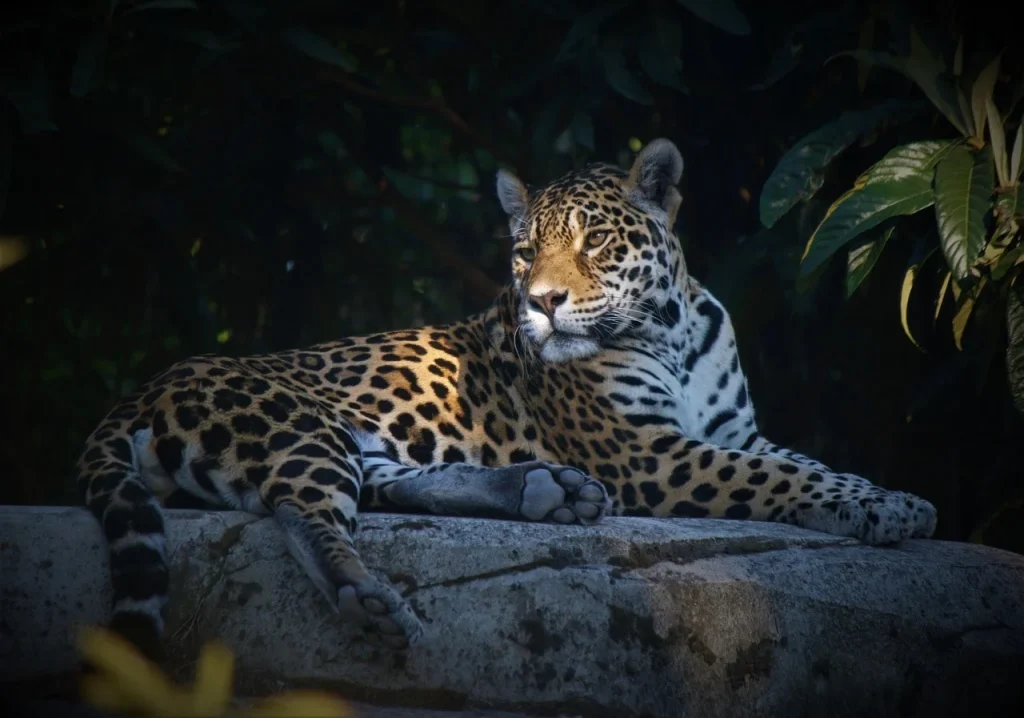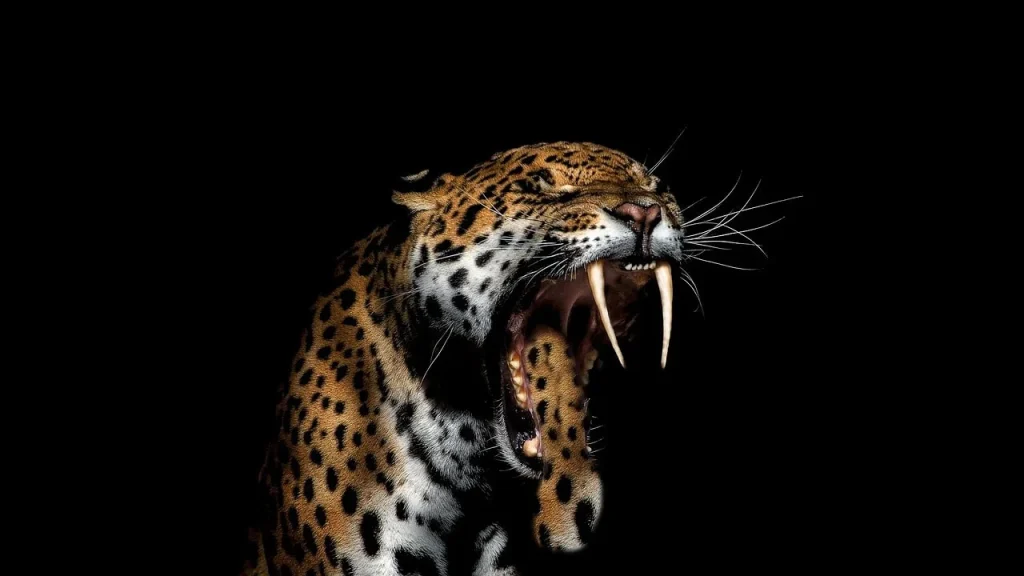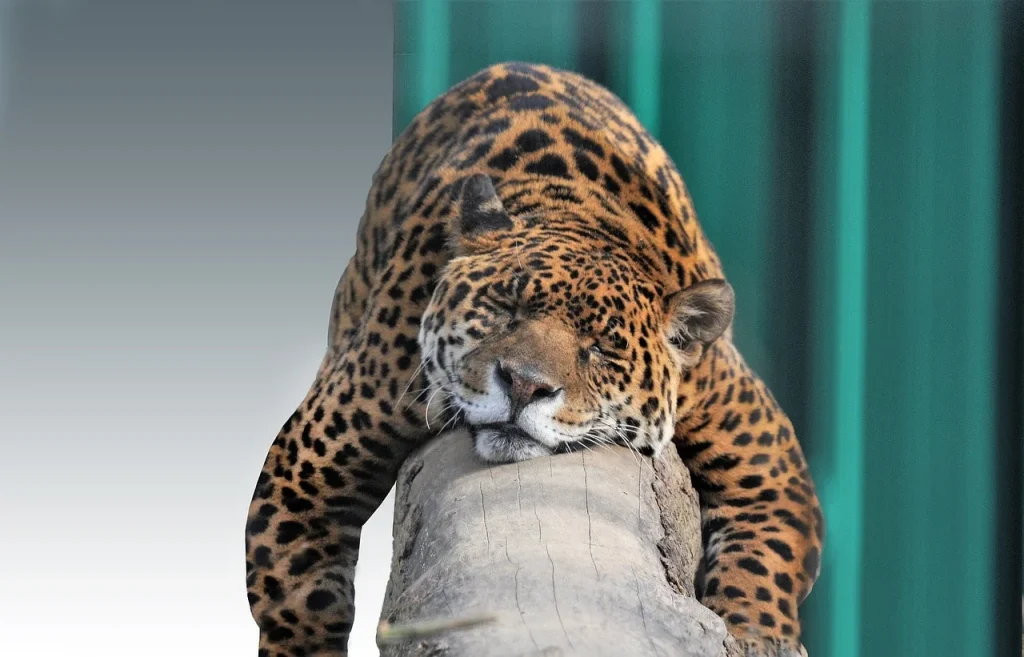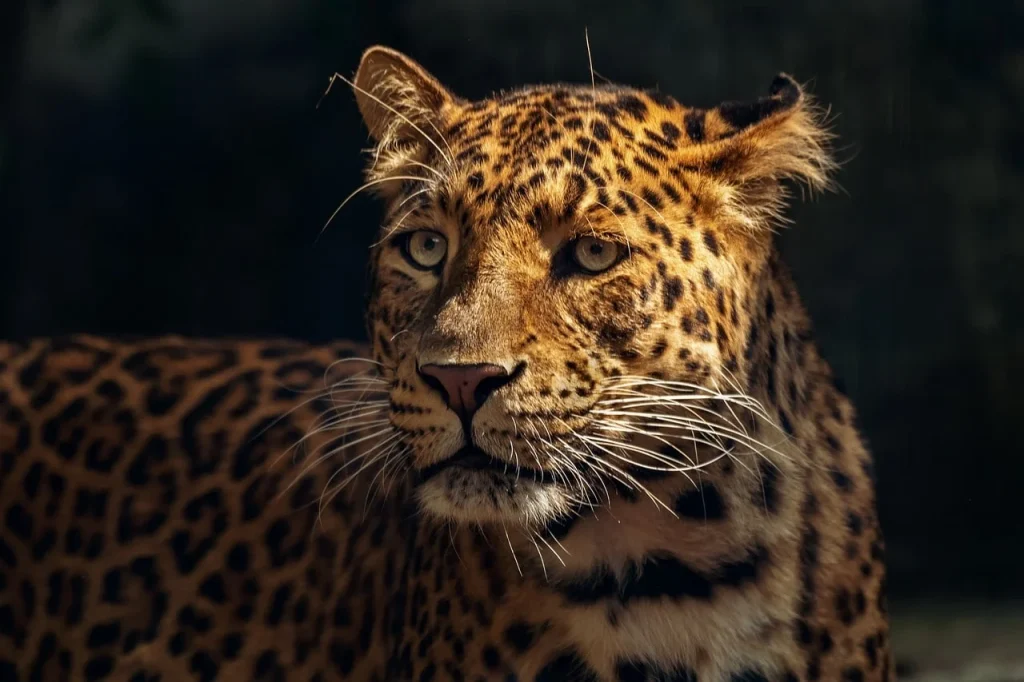Have you ever wondered about the mysterious and majestic jaguar? This incredible big cat, known for its powerful build and striking coat, roams the forests of Central and South America.
In this article, we’re explore some fascinating facts about jaguars. From their unique hunting techniques to their cultural significance in ancient civilizations, get ready to explore the secretive world of these magnificent animals.
The jaguar is the true king of the jungle, not just for its strength but for its deep intelligence.
David Attenborough
Jaguar Facts
Uncover the mysteries of the powerful and elusive jaguar. Pay attention to the details, as a quiz at the end will determine if you’re truly a jaguar expert!
- Jaguars possess the most powerful bite relative to body size among big cats, capable of crushing turtle shells and alligator skulls.
- These predators are excellent swimmers and often inhabit areas close to water bodies such as lakes and rivers.
- Unlike many other cats, they often use a unique killing method by piercing the skulls of their prey with their sharp teeth.
- Their coat patterns are not just for beauty; the rosettes help them blend into their environment, acting as camouflage while hunting.
- The name ‘jaguar’ comes from the Indigenous Tupian word yaguara, meaning “beast of prey.”
- Historically, these animals were found as far north as the Grand Canyon in the United States.
- Jaguars have a cultural significance in Mesoamerican civilizations, often associated with the deity of the night.
- They are solitary animals; females and males come together only during mating season.
- These creatures can carry prey up to twice their body weight up into a tree to avoid competition from other predators.
- Jaguars can produce a variety of vocalizations, including roars, but their most eerie is the sawing call, resembling the sound of a saw cutting through wood.
- They have a broader head and shorter, stockier limbs compared to their cousin, the leopard.
- Their territories can be vast, with a single jaguar controlling an area up to 80 square kilometers in the wild.
- Unlike other cats, jaguars do not avoid water; they enjoy bathing and playing in it.

- Jaguars use tactile communication through nuzzling and head-bumping when interacting with their young or during mating.
- The gestation period for a jaguar is approximately 100 days, after which they typically give birth to two cubs.
- They play a crucial role in their ecosystem by controlling the population of other species and maintaining balance.
- Jaguars have partially webbed feet, aiding their proficiency in swimming.
- Their whiskers or vibrissae are highly sensitive, helping them navigate and hunt in the dark.
- In some cultures, jaguar teeth, claws, and whiskers are considered to have medicinal properties.
- They sometimes practice coprophagy, the act of eating excrement, to ingest beneficial bacteria and gain more nutrients.
- Their rosette spots are unique to each individual, just like human fingerprints.
- Jaguars are known to live up to 15 years in the wild and up to 25 years in captivity.
- They can run at speeds of up to 50 kilometers per hour, but only for short distances.
- Jaguars often cover their kills with leaves or debris to hide them from other predators and to save for later consumption.
- Young cubs are born blind and only open their eyes after two weeks.
- These big cats are adept climbers, often ascending trees to prepare for an ambush.
- In the ancient Mayan mythology, the jaguar was seen as a symbol of the night sun and darkness, moving through the underworld at night.
- Due to their elusive nature and preference for dense rainforest habitats, they are incredibly challenging to spot in the wild.

- They have a unique adaptation in their jaws that allows them to crack open the shells of river turtles and use their contents as a food source.
- Jaguars maintain vast territories that they mark with urine and claw marks on trees.
- Their eyesight at night is exceptional, allowing them to hunt effectively in the dark.
- Jaguars are often mistaken for leopards, but their behavior and physical appearance are distinctly different.
- They are the only big cat in the Americas and the third-largest globally, after tigers and lions.
- Researchers use hidden cameras and collect fecal samples to study their habits and populations in the wild.
- Jaguars have been known to cross significant distances, even swimming across the Panama Canal.
- Their diet is diverse, ranging from deer and peccaries to smaller animals like frogs and mice.
- In some regions, jaguars have adapted to a more aquatic lifestyle, hunting fish and even caimans.
- Jaguars occasionally engage in playful behavior, particularly when young or interacting with their offspring.

- Their tail, which is shorter relative to other big cats, helps them maintain balance but is not long enough for tree branch maneuvering like the leopards.
- Their fur color can vary significantly, from golden yellow to reddish-brown, depending on their habitat.
- Some jaguars are completely black, a coloration known as melanism, which is a genetic variation that occurs due to a dominant allele.
- Black jaguars still have spots, which can be seen if observed closely under certain lighting conditions.
- In the Amazon rainforest, jaguars play a vital role in stabilizing ecosystems and preventing overpopulation of certain species.
- Due to habitat loss and conflicts with humans, jaguars are considered a near threatened species by the IUCN Red List.
- Their ability to adapt to different terrains and climates has allowed them to survive in environments ranging from rainforests to grasslands.
- Conservation efforts for jaguars include habitat preservation, anti-poaching measures, and promoting human-jaguar coexistence strategies.
- Jaguars have an incredible sense of hearing, which is crucial for detecting prey in dense forest environments.
- Despite their size and power, jaguars have been observed to avoid conflicts with humans whenever possible.
- Jaguars are critical for ecological balance as apex predators; they help control the populations of other species and prevent the overgrazing of vegetation.
- They exhibit a behavior known as crepuscular activity, being most active during dawn and dusk, which helps them avoid the heat of the day and increases their efficiency as hunters.
Jaguar Myths

Now that we’ve explored the facts, let’s clear up some common misconceptions. In the next section, we’ll separate the myths from the truth about jaguars.
- Jaguars Only Live in Jungles
They are incredibly adaptable and not restricted to jungle habitats. They thrive in a variety of environments including forests, swamps, and grasslands. Their range extends from the southern United States to northern Argentina, adapting to each region’s unique conditions. - Jaguars Are Aggressive Toward Humans
They generally avoid humans and are not naturally aggressive toward us. Human-jaguar conflicts are rare; they typically occur when their natural habitats are encroached upon or when their prey is scarce, pushing them closer to human settlements. - Jaguars and Leopards Are the Same
Although they look similar, jaguars and leopards are distinct species with different geographical ranges. Jaguars are sturdier, have shorter limbs, and their spots include central dots. Leopards are lighter, more elongated, and found in Africa and Asia. - Jaguars Can’t Swim
They are excellent swimmers. They often live near water sources like rivers and lakes and are capable of swimming to hunt aquatic animals like fish or even caimans. Their ability to swim is a distinct advantage in their watery habitats. - Jaguars are Daytime Hunters
They are primarily nocturnal or crepuscular, meaning they are most active during the night and at dusk or dawn. This behavior helps them avoid the heat of the day and increases their success in hunting nocturnal or crepuscular prey.
Jaguar Quotes

Let’s continue with some quotes. You can always share more in the comments and I will add them to the list.
In the eyes of a jaguar, we see the reflection of the wild and untamed spirit.
Jane Goodall
Jane Goodall captures the essence of the jaguar’s wild nature, suggesting that its spirit is a mirror to the untamed parts of our world.
Jaguars do not need to be saved; they need the freedom to save themselves.
Sylvia Earle
Sylvia Earle advocates for conservation strategies that allow jaguars to thrive in their natural habitats, emphasizing autonomy over human intervention.
The jaguar moves like a poem and acts as the punctuation.
Paul Nicklen
Paul Nicklen poetically describes the grace and decisiveness of jaguars, likening their movements to the flow of poetry with moments of impactful presence.
Every time I see a jaguar in the wild, I feel like the earth has shared with me one of its greatest gifts.
Bear Grylls
Bear Grylls expresses his profound appreciation and wonder each time he encounters a jaguar, viewing these moments as precious gifts from nature.
To protect the jaguar is to protect the forest, and to protect the forest is to protect us all.
Isabel Allende
Isabel Allende connects the fate of jaguars directly to the broader environmental issue of forest conservation, underscoring the interconnectedness of nature and human survival.
Jaguar FAQ

As we approach the final section before the quiz, the upcoming FAQ offers key insights. Read carefully.
- Where do jaguars live?
They primarily inhabit rainforests in Central and South America, with the Amazon Basin being a key stronghold. - What do jaguars eat?
They are carnivores and skilled hunters. They eat a variety of prey, including deer, capybaras, and even caimans. - Are jaguars endangered?
Yes, they are considered near threatened due to habitat loss, poaching, and conflicts with humans. - How strong are jaguars?
They have incredibly strong jaws and can crush the skulls of their prey with a single bite. - Do jaguars climb trees?
Yes, they are excellent climbers and often use trees for hunting and resting.
Jaguar Trivia

Welcome to the ultimate jaguar quiz! Test your knowledge or risk being stalked by a virtual jaguar in your dreams tonight!
Conclusion
To conclude, jaguars are truly remarkable animals that amaze us with their power and beauty. Their distinctive characteristics and crucial role in their ecosystems make them a key species to study and protect.
Learning about them not only fascinates us but also emphasizes the need for conservation. Till next time, stay curious and explore more. Cheers.


